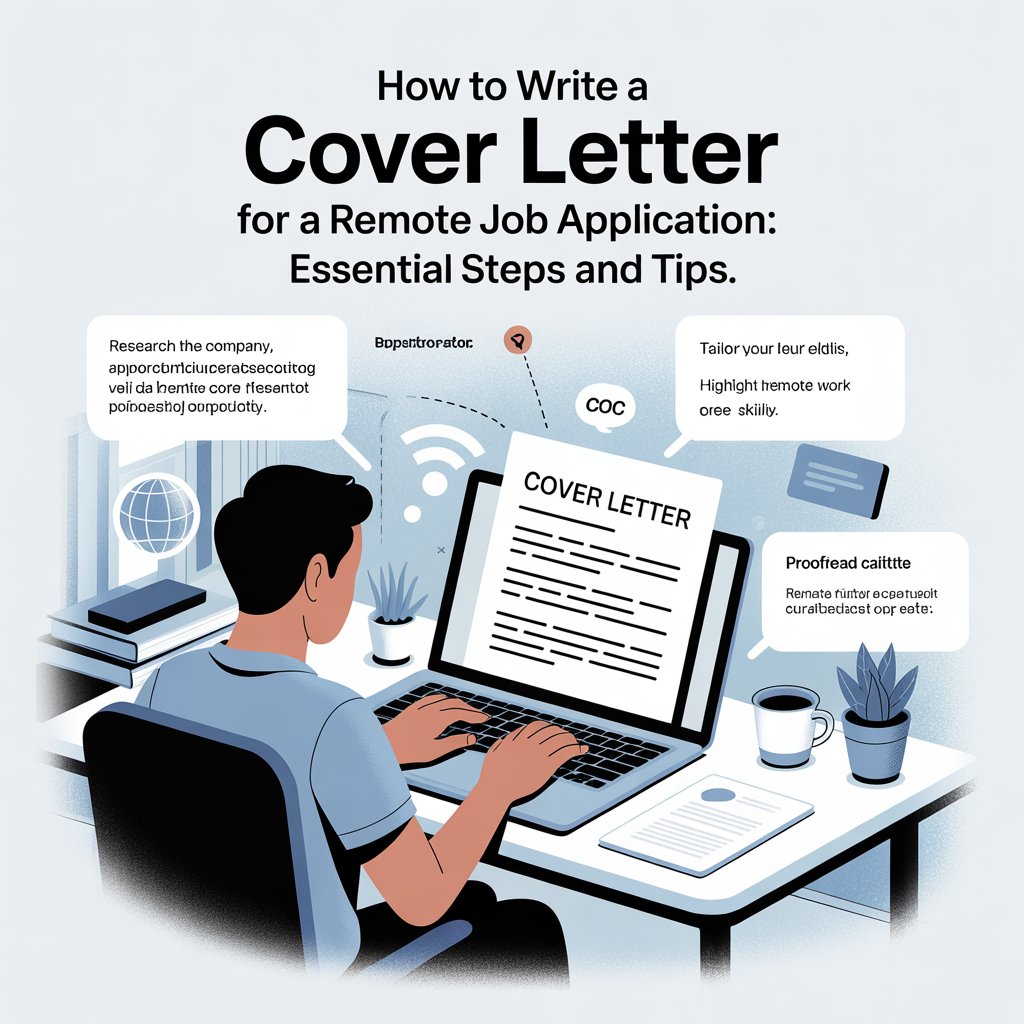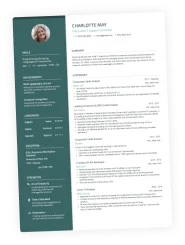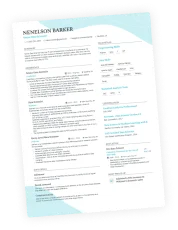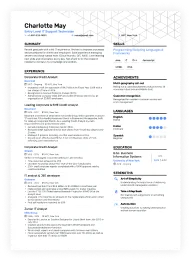Writing a cover letter for a remote job takes a different approach than applying for a traditional in-office role. A strong remote job cover letter must clearly show a candidate’s ability to work independently, highlight strong communication skills, and demonstrate experience with remote tools and environments. This makes it easier for hiring managers to see that the applicant is not only interested in remote work but also able to adapt and be productive in a virtual setting.

Many job seekers are unsure how to showcase these skills effectively on paper. With the right format, targeted examples, and practical tools, anyone can create a cover letter that stands out. Using platforms like RoboApply to create a professional cover letter and optimize your resume helps applicants easily adjust their documents for each remote position, saving time and boosting confidence that they are putting their best foot forward.
Understanding the Importance of a Cover Letter for Remote Jobs
A cover letter is a vital part of any remote job application because it highlights skills specific to virtual work and shows interest in the company. It helps employers quickly see if a candidate can thrive in a distributed team and handle communication from a distance.
Making a Strong First Impression
Sending a thoughtful cover letter sets the tone for a remote job application. It is often the first sample of written communication that a hiring manager sees. Remote employers use cover letters to judge if a candidate communicates clearly and can present ideas simply and professionally.
Remote jobs require extra trust since the team will not work face-to-face. A cover letter should show self-motivation, good time management, and reliability—in addition to job-specific strengths. Hiring managers prefer applicants who clearly explain why remote work fits their style and why they want the remote lifestyle.
Highlighting past remote experience or skills, such as using online collaboration tools, can help the applicant stand out. RoboApply can help job seekers create a professional cover letter that makes a strong, positive impression on remote-first employers.
Differences Between Remote and Traditional Cover Letters
A remote job cover letter is different from a traditional one. It must speak directly to the challenges and expectations of remote work.
Remote employers want proof of skills like independent work, digital communication, and the ability to manage deadlines without supervision. Cover letters for remote roles should name specific online tools used, such as Slack or Zoom, and describe ways the applicant has succeeded in virtual settings.
While traditional cover letters might focus more on in-person collaboration or location, remote job cover letters should mention time zone flexibility, comfort with digital teamwork, and experience working from home. Platforms like RoboApply allow job seekers to build your resume with RoboApply and create tailored letters that fit these remote-specific needs.
By clearly addressing these differences, job seekers can show they are ready for remote work and help their application move forward faster. For more tips, see how to write a cover letter for remote jobs.
Preparing to Write Your Remote Job Cover Letter
Writing a strong cover letter for a remote job starts before you even begin typing. Gathering important details and insights will help tailor your letter, so it matches what each employer is looking for.
Analyzing the Job Description
Understanding the job description is crucial. Many companies list specific skills they need, such as time management, self-motivation, or communication software experience. Highlight these key phrases—they show what the employer values most.
- Make a list of job requirements and preferred qualifications.
- Check for keywords like “remote collaboration,” “self-starter,” or “independent worker.”
- Note any software or technical skills mentioned, such as Zoom, Microsoft Teams, or project management tools.
Candidates should also observe the tone of the posting. If the language is formal, your cover letter should be more professional. If it is casual, keep your approach friendly but direct.
Job seekers can use tools like RoboApply’s resume scoring and cover letter builder to compare their documents to the job description and pinpoint missing skills. Using these services makes it easier to tailor each application and stand out in the job market.
Researching the Company and Hiring Manager
Learning about the company and hiring manager helps the cover letter feel more personal and targeted. Start by visiting the company’s website and reading their “About Us” and careers sections. Pay attention to their mission, values, and company culture.
If possible, look up the hiring manager on LinkedIn. Use their name in your greeting rather than a generic salutation. Notice the company’s recent news, projects, or achievements you can mention in your letter.
Make a short list of facts found—such as their remote work policies or growth plans—and connect those details with your own skills. For example, show how your experience aligns with a company’s focus on flexible work or teamwork.
RoboApply helps job seekers auto-apply to jobs across platforms by generating company-specific cover letters fast, so users can go beyond generic templates and make every application count. Taking these steps shows hiring managers you are attentive and interested in their exact needs.
Essential Elements of an Effective Remote Cover Letter
A remote cover letter must show the applicant’s best skills for working online while addressing what the employer is looking for. Focusing on relevant qualifications, using the right keywords, and showing strong remote work abilities can help a candidate stand out.
Highlighting Relevant Skills and Qualifications
Employers want to see skills and qualifications that match the job description. It’s important to list both hard skills, like software knowledge, and soft skills, such as time management or communication. Focus on specific skills that matter for remote work: organization, reliability, self-motivation, and digital literacy.
List your hard skills (for example, Google Workspace, Slack, project management tools) in one section. Then, include soft skills like problem solving or adaptability. A simple table can help:
| Hard Skills | Soft Skills |
|---|---|
| Google Workspace | Self-motivation |
| Asana, Trello | Time management |
| Video conferencing | Communication |
Discussing these skills clearly, in past job tasks or projects, helps build trust with the employer.
Example: Remote Cover Letter for a Marketing Role
Dear Hiring Manager,
I am writing to express my interest in the Remote Marketing Coordinator position at ABC Company. With five years of experience in digital marketing and remote collaboration, I have developed strong organizational and communication skills vital for this role. In my previous job, I managed projects using Trello and Asana, coordinated social media campaigns, and analyzed performance data with Google Analytics—all while working from home.
I thrive in remote environments thanks to my ability to stay motivated and focused. I consistently meet deadlines, communicate clearly with teams using Slack and Zoom, and quickly adapt to new software. I am eager to bring these same skills to your marketing team.
Thank you for your consideration.
Sincerely, Jessica Miller
Strategically Using Keywords
Many companies use software to scan cover letters for keywords. These are words or phrases from the job posting about required skills, certifications, or job duties. Including these keywords improves your chances of passing the first screening.
Carefully read the job description. Pick out important keywords, such as “remote team collaboration,” “project deadlines,” or “CRM software.” Use these terms naturally in your cover letter.
A list can help you organize:
- “Remote project management”
- “Self-motivated”
- “Time zone flexibility”
- “Video conferencing”
- “Google Drive proficiency”
Mentioning these does not mean simply copying the job ad. Combine keywords with real examples or achievements. RoboApply can help identify and analyze the right keywords so job seekers can create a professional cover letter that stands out.
Tailoring for Remote Competencies
Remote jobs require certain competencies beyond typical office roles. Employers look for people who can manage time, work independently, and communicate well without in-person contact.
Show remote competencies through evidence. For example, share a story about how you handled a remote team project or solved a problem working online. Highlight experience with remote tools and routines.
Use bullet points to break up your experience, like:
- Coordinated a team across four time zones using Slack and Zoom
- Developed a personal schedule to meet project deadlines without supervision
- Led virtual meetings and reported on project status
- Trained new hires through video tutorials and screen sharing
Job seekers can use platforms like RoboApply to build their resume with RoboApply and refine their cover letter to highlight these competencies. By tailoring the cover letter this way, candidates demonstrate they are ready for the demands of remote work and can auto-apply to jobs across platforms.
Structuring Your Remote Cover Letter
A clear, organized cover letter helps candidates stand out when applying for remote jobs. Effective cover letter writing requires a strong opening, evidence of achievements, and a closing that motivates the reader to take action.
Writing an Engaging First Paragraph
The first paragraph should quickly answer three key questions: Who is applying, what position are they seeking, and why are they interested in the remote role?
Start by stating the exact job title and employer. Mention where the role was found—such as LinkedIn or Indeed—then explain your motivation for applying, like a history of productive remote work or strong alignment with the company’s mission.
Highlight any referrals if relevant. This section is also a good place to mention experience using remote collaboration tools or relevant skills in time management.
Here’s a sample first paragraph:
Dear Hiring Manager,
I am excited to apply for the Remote Marketing Coordinator position at XYZ Corp, which I discovered on LinkedIn. With over four years of experience working from home, I am drawn to your company’s emphasis on innovation and effective virtual collaboration. My background in digital campaigns and remote cross-functional teamwork aligns well with your requirements.
Job seekers can use platforms like RoboApply to create a professional cover letter that ensures their introduction is tailored and impactful.
Showcasing Achievements in the Body
The middle section—often the second and third paragraphs—should demonstrate results tied to skills needed for remote jobs. Employers value self-motivation, communication, and time management. Give concrete examples of when these skills led to success.
Use short bullet points or bolded achievements for clarity:
- Led remote project teams to launch three campaigns, increasing web traffic by 20%
- Adapted quickly to different time zones and implemented calendar tools for smooth workflows
- Maintained high productivity while managing multiple deadlines from a home office
Here’s a copy-ready body example:
During my previous role as Digital Content Manager, I led a fully remote team to develop social media strategies that boosted engagement by 30%. I frequently used Slack, Trello, and Zoom, enabling smooth communication despite time zone differences. By implementing new project management tools, we reduced missed deadlines by 40%. This proven ability to deliver results in remote settings makes me confident I can add value to your team.
To further improve a cover letter’s impact, job seekers can use resources to optimize your resume for remote work through RoboApply.
Crafting a Persuasive Closing
The closing lines should reinforce enthusiasm for the role and request next steps. It is important to express appreciation for the reader’s time and include a call-to-action.
Restate interest in the job and note that your skills are a good match for the position and remote environment.
A closing example:
Thank you for considering my application. I am eager to discuss how my experience and dedication to remote work can benefit XYZ Corp. I look forward to the chance to interview and share more about my background.
End by referencing any attached resume or portfolio and invite follow-up. Those using platforms like RoboApply can auto-apply to jobs across platforms, further streamlining the job search process.
Tools, Tips, and Next Steps for Remote Cover Letter Success

Remote job applications require clear communication, strong digital skills, and a thoughtful follow-up plan. By using the right tools and strategies, job seekers can stand out and improve their chances of being noticed in a crowded online job market.
Leveraging Artificial Intelligence and chatgpt
Artificial intelligence tools like ChatGPT can help job seekers quickly draft, edit, or personalize a cover letter for a remote role. For example, users can enter the job description and their resume details into ChatGPT to receive a tailored draft as a starting point. These tools save time and reduce stress, especially for those applying to many roles at once.
Platforms like RoboApply also use AI-driven features to help job seekers build their resume with RoboApply, create a professional cover letter, and auto-apply to jobs across platforms like LinkedIn and Indeed. This simplifies repetitive tasks and allows users to focus on what makes them unique.
Key tips:
- Use AI for the first draft, but always review for personal details and accuracy.
- Make sure the letter addresses specific skills and experience needed for a remote job, such as time management or remote team skills.
- Edit for clarity, grammar, and tone before submitting.
Using Cover Letter Examples
Looking at real cover letter examples can give job seekers clear guidance for their own applications. Examples can help with structure, tone, and even word choice. For remote positions, it’s important to highlight skills like communication, self-motivation, and experience working from home.
One way to approach this:
Study cover letter samples from trusted sources or templates for remote jobs—such as those found in this easy guide for remote cover letters.
Use bullet points or tables to organize skills that match remote work:
| Skill | Example Phrase |
|---|---|
| Communication skills | “I regularly lead remote meetings…” |
| Independence | “I excel working with minimal oversight” |
| Tech proficiency | “Experienced with Slack, Zoom, Trello” |
When writing, job seekers should also include references to platforms like RoboApply to show they are proactive about their job search and able to use modern tools.
Following Up After Submission
Following up after sending a remote cover letter helps show interest in the position. Job seekers can send a polite email or LinkedIn message if they haven’t heard back in 7-10 business days.
A good follow-up message should:
- Remind the employer of the job title and date applied
- Reiterate interest in the role
- Politely ask if there are any updates
This extra step can set applicants apart by showing they are thorough and truly interested. For those managing multiple applications through platforms like RoboApply or Job Tracker apps, tracking follow-ups ensures no opportunity is missed. A short, well-written message makes a positive impression and helps keep the process moving forward. See an example template in this detailed cover letter follow-up guide.
Frequently Asked Questions

A well-crafted cover letter for a remote job shows the employer how the applicant can work independently, communicate well, and use technology. Applicants should share specific examples, follow a clear structure, and use the cover letter to show their fit for remote work.
What are the key elements to include in a cover letter for a remote job?
A cover letter for a remote job should have a clear introduction that names the job and explains why the applicant is interested. Listing contact info at the top is important. The body should connect the applicant’s skills and experiences to the job by using examples.
It is important to show comfort with remote work tools, digital communication, and time management. If someone referred you, mention it. The letter should end with a confident statement about next steps and how to follow up. More about these points is discussed on Indeed and in this remote cover letter template guide.
How can I highlight my relevant experience in a cover letter for a remote role without prior remote work experience?
Even if someone has not worked remotely before, they likely have experience that transfers. They can mention work with online tools or projects done with people in other places. Pointing out times they managed tasks by themselves or handled deadlines without direct oversight also helps.
Strong communication skills, organization, and the ability to use video calls or chat apps like Slack are all good things to highlight. These details help explain that they are ready for remote work.
In what ways can a cover letter make a strong case for a candidate’s suitability for remote work?
A strong cover letter uses examples to prove the applicant can work on their own and communicate well. Using short stories about past teamwork online, managing schedules, or solving problems in a digital setting can set a candidate apart.
Stating flexibility in handling different tasks and being open to feedback also matters in remote environments. Describing specific skills, like organizing tasks with online planning tools, is even better than using general words.
What format should be followed when writing a cover letter for an online job application?
The format should be simple and clear. A good cover letter starts with contact information, the date, and a greeting. After that, the body is divided into short paragraphs. Each one focuses on a skill, a related example, or a reason why the person is a good fit.
It’s best to keep the entire letter easy to read. Using clear headings, bullet points, or bold text can help, though it’s important not to overdo it. Specific guidance about formatting for remote jobs can be found here.
How should I address a cover letter when applying for a remote position without a specific contact person?
If the job posting does not name a hiring manager, a candidate can use “Dear Hiring Manager” or “Dear [Company] Team.” It is not necessary to spend a lot of time searching for a name if none is listed. Using a general but professional greeting keeps the tone respectful and direct.
What strategies can make a cover letter for a remote job application stand out to employers?
Job seekers should tailor each letter for the role, using keywords from the job ad. They can talk about specific tech skills or mention how they have solved problems in past roles. Mentioning online tools and showing excitement about remote work helps too.
Using tools like RoboApply to “create a professional cover letter” or to “optimize your resume” makes writing and applying faster and more effective, especially when applying to many jobs or when wanting to auto-apply to jobs across platforms. Additional tips can be found in this remote job cover letter guide.








